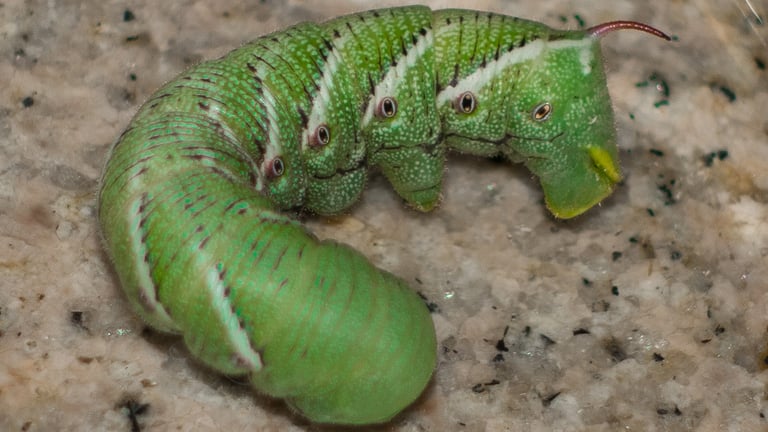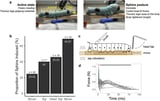Caterpillars Use 'Sphinx Pose' to Actively Manage Pain, Study Finds
August 24, 2025
Scientists have discovered that tobacco hornworm caterpillars enter a 'sphinx state'—a motionless, statue-like pose—when disturbed or in pain, which is a deliberate response rather than a simple reflex.
This sphinx state involves the caterpillars curling their heads downward and significantly dampening their sensitivity to pain, suggesting active pain management behavior.
The behavior was confirmed to be actively chosen, as it could not be triggered solely by brain structures responsible for movement and sensory processing, and was absent when caterpillars were isolated from external stimuli.
The findings challenge traditional views of nociception as a hard-wired, automatic response, indicating that even simple organisms can actively modulate their pain responses.
Research from Tufts University reveals that tobacco hornworm caterpillars actively suppress pain by adopting a 'sphinx' pose, curling their head and thorax downward and remaining still, instead of reacting defensively or fleeing.
This finding challenges the traditional view of nociception as purely automatic and stereotyped, showing that even insects can actively regulate their response to pain.
This research offers insights into pain processing that could influence pest control strategies and inspire new approaches to human pain relief, especially in conditions involving exaggerated pain signals.
The study was conducted by researchers at Tufts University and published in the journal Biology Letters, highlighting the behavioral flexibility of insects in response to pain.
This sphinx state is triggered by mechanical stimuli and reduces their responsiveness to painful heat stimuli, indicating an active pain suppression behavior rather than a passive reflex.
The behavior is controlled by a specific brain region that the caterpillars actively choose to activate, demonstrating a level of behavioral modulation not typical in simple animals.
Potential applications include developing targeted pest control methods that interfere with pests' pain management behaviors, reducing reliance on broad-spectrum pesticides.
Insights from this research could also inform human pain management strategies, as studying the simpler insect nervous system might reveal mechanisms of pain suppression that are difficult to observe in more complex brains.
Summary based on 2 sources
Get a daily email with more Science stories
Sources

Phys.org • Aug 22, 2025
Caterpillars actively suppress pain by striking a sphinx pose
Interesting Engineering • Aug 24, 2025
The sphinx pose: Caterpillars reveal a new motionless way to handle pain